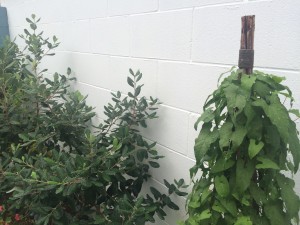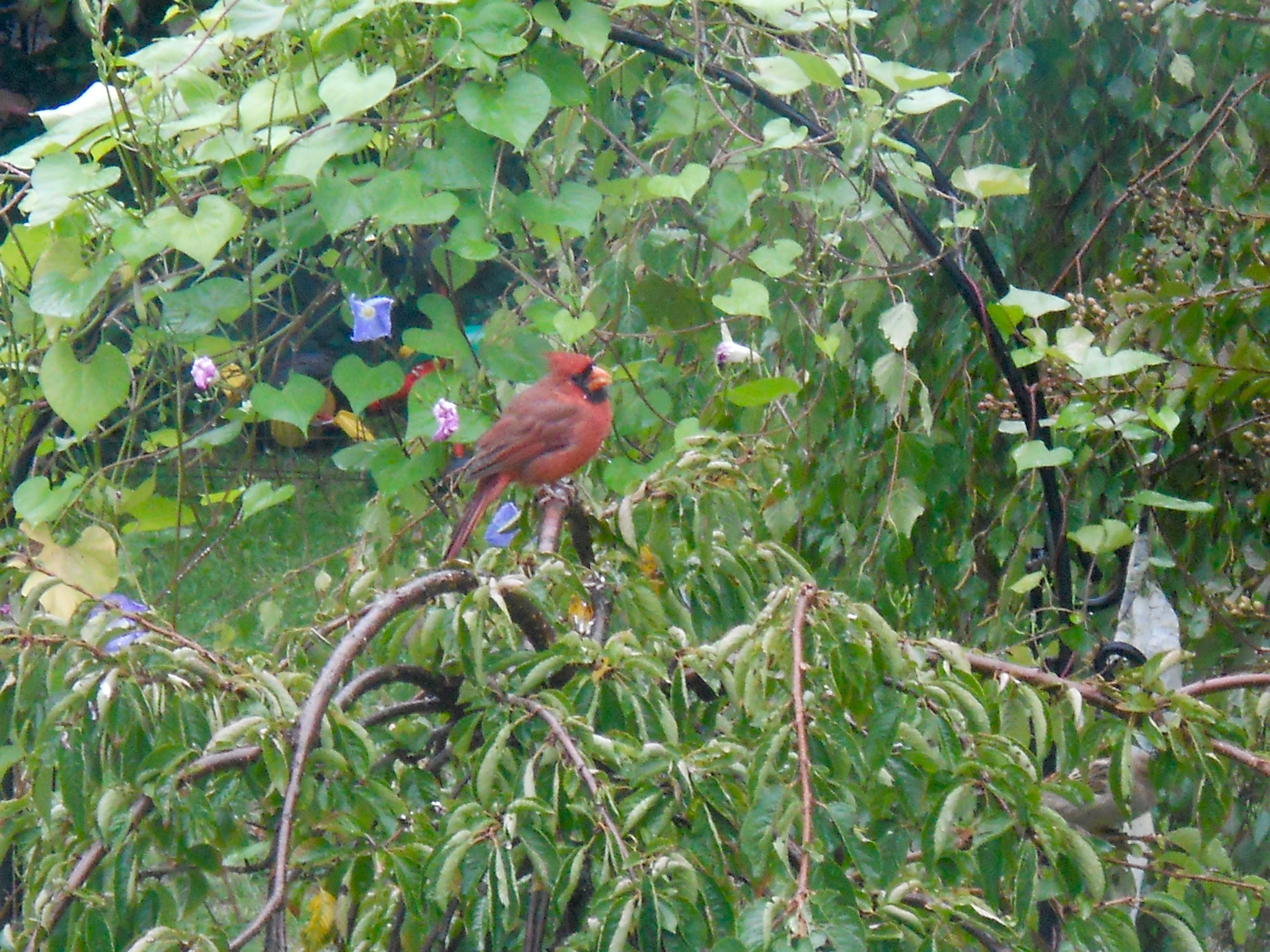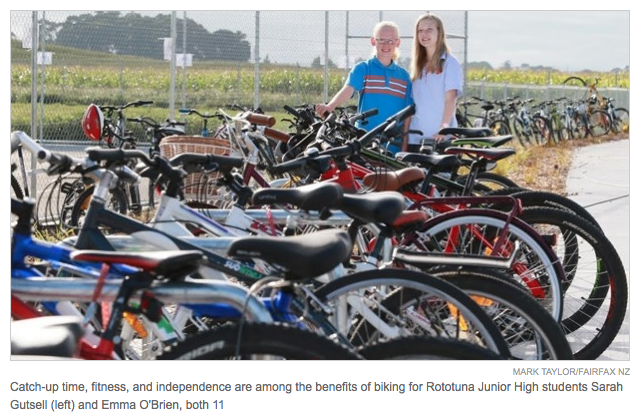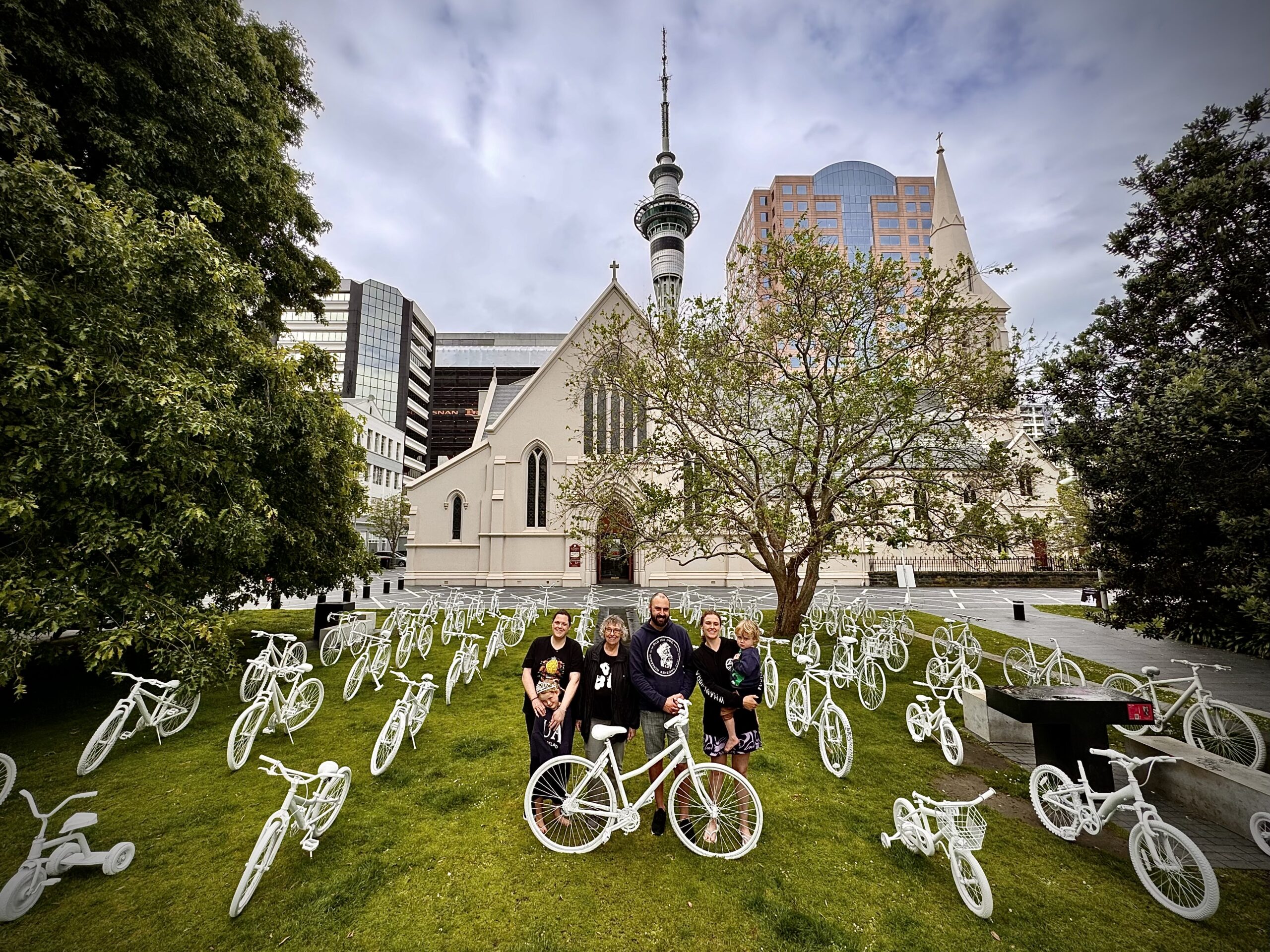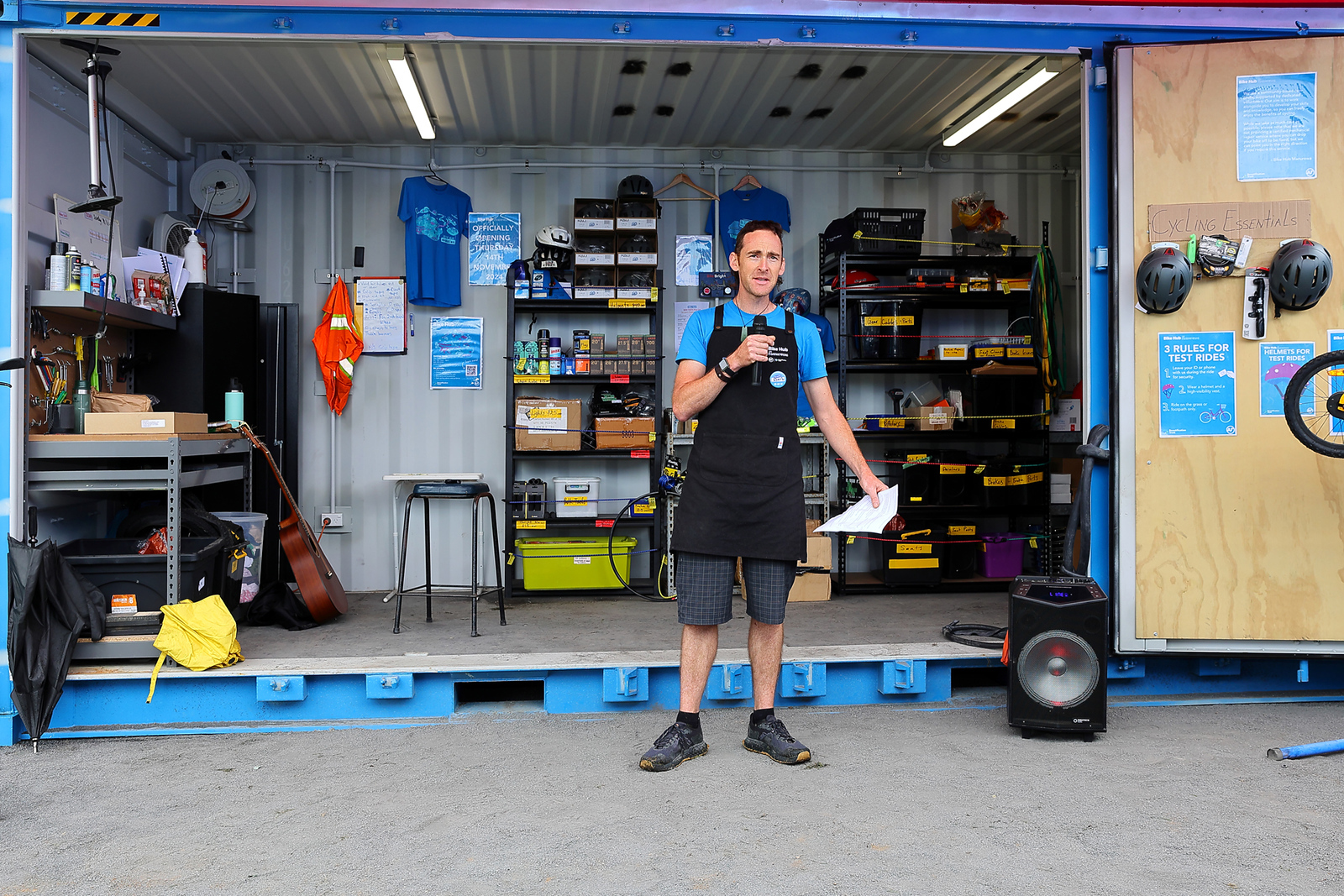I’m currently battling some rogue convolvulus, aka ‘morning glory’, in my garden. (Bear with me, there’s a bike connection to this story!). It’s twining round the trampoline, peeking through the fence, smothering a native tree. I rip it out as fast as I can but I’m barely keeping up. This is a bit ironic, because when I lived in the northeastern United States, I used to plant it on purpose every spring. There, the snowy winters would knock it back, so it never had a chance to get out of control.

Whereas, in Auckland, all bets are off. The thing about Auckland is, anything grows, given half a chance.
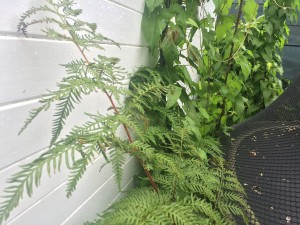
I’m thinking about gardening because I’ve been following the Sunday Star-Times campaign for families to get active on the school run, and councils to make the roads safer for children.
Last weekend, the first editorial in what will be a month-long series came out fighting. Editor Jonathan Milne wrote;
Enough with the excuses.
A massive 55 per cent of primary school kids are driven to school in the car. That has nearly doubled since 1990. This is terrible for our children’s health, disastrous for traffic congestion, costly in petrol and bad for the environment.
And you know the real reason we’re not taking our kids to school by foot, or on their scooters or bikes? We parents are just plain lazy.
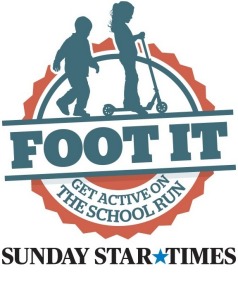 Preach it, Jono! I was singing along from the choirbook – and then my eye snagged on that last word.
Preach it, Jono! I was singing along from the choirbook – and then my eye snagged on that last word.
Wait. It’s our fault?? True, the editorial goes on to tease out the various excuses we give ourselves for putting on a chauffeur’s cap and ferrying the kids to school. But “lazy” is a fighting word. Can we maybe say “time-management-challenged”? After all, a lot of families are really busy, and if a parent is driving to work anyway, why not drop off a kid along the way?
Never fear, the SST is already onto that argument:
With all of us driving to work, and dropping off the kids on the way, many of our roads are chocka. A massive 1.3 million of us hopped in a car or truck to get to work on Census Day 2013, and many dropped off the kids at school. Because the streets are so busy, working-age adults are spending an average eight hours a week in the car – up 25 per cent. Between us all, that’s 1.2 billion hours a year. This means the school run in a car is taking longer than ever, but walking and cycling speeds haven’t been affected by the growing car traffic congestion.
And it’s true. Everyone knows how much more smoothly traffic flows during the school holidays. And everyone knows how impossible it is to get a park near schools. And, if you’ve walked or biked your kids to school lately, you know both the happy feeling of sailing past a row of idling cars – and also the stressful feeling of guarding your kids like an anxious sheepdog, from SUVs circling like wolves, looking for a parking spot.
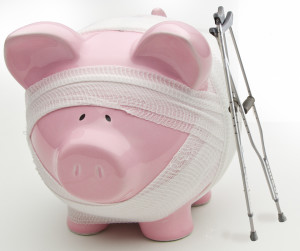
We secretly know that most of us aren’t necessarily saving that much time, either collectively or individually, by putting more cars on the road to drive our kids to school. We just feel as if we are (I guess because theoretically cars can go faster even if they don’t, actually, in real life).
But beyond that: even if driving kids to school is a bit faster, I wonder – do we come out of the equation in credit or in debt? What kind of time are we saving?
Are we saving our kids time? What kind of time? Or are we actually kind of raiding their future piggybank of life – and our own? Because what are we going to do with that saved time? And, knowing what we know about the value of exercise, and the importance of good habits started young, and so on and so on… will any of us be healthy enough to enjoy it by the time we get around to spending it?
In that sense, driving kids to school is a bit like driving to the gym, except without the gym bit. Ah well. There’s always ‘car gymnastics’, which is ‘almost as good as walking or biking to school’!
https://www.youtube.com/watch?v=nkj1H8mBgj0
But of course time-management isn’t the whole story: a lot of the problem is that as parents we’re making rational individual choices inside an irrational set-up. We’re like rats in a maze, eating the poisoned peanuts because at least they’re peanuts. There’s a flawless logic to this much-shared cartoon…
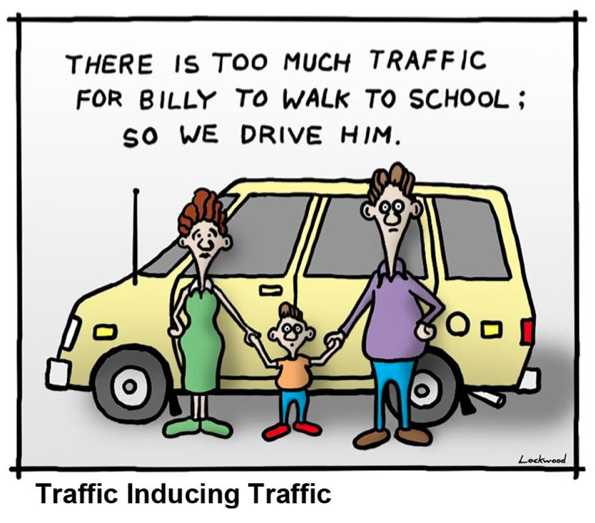
And, as the SST series makes clear, the real victims of this vicious circle, and the ones who most stand to benefit from getting places under their own steam, don’t generally get a choice. The conversation around travel kids’ options has a kind of downhill inevitability, always in the direction of more limits in the guise of ‘safety first’. It’s like a runaway car… except the people behind the wheel have forgotten they’re (we’re) in charge of brakes as well as steering.
Where does it stop? When a Wellington school recently attempted to ban kids from biking to school, the headline was ‘How old is safe to bike to school?’ But we could turn that around to reveal the four-wheeled elephant in the room and on the road, because a better question might be: ‘How slow is safe enough to drive around kids walking and biking to school’?
Because slower speeds is a key factor, as the SST reports in its first of its weekly articles in the series. A trial programme is under way in New Plymouth that combines lower speeds with asking parents to park further away from school:
The numbers of kids dropped off by car at the school gate has halved and the numbers walking, cycling and using scooters has swiftly risen. About a quarter are dropped at its new ‘park and ride’ zones, about 500m to 1km from school, and walk or cycle the rest of the way.
The council has also reduced driving speeds around many schools to 40kmh at peak times, and some roads in the central business district have a 30kmh speed limit.
(None of this is rocket science, by the way. Scotland is pursuing a similar programme of safe streets round schools. And Portland has spend the last 15 years figuring this one out.)
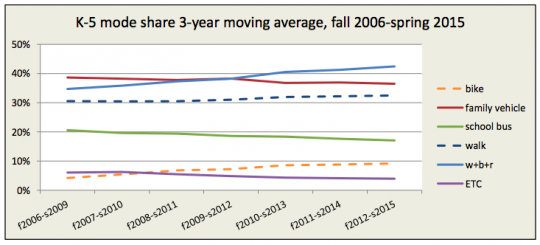
And it turns out 30kmh is the sweet spot for safety. As the SST article explains:
Safekids released a report in December 2015 about child unintentional deaths and injuries, which calls for a range of measures to make the roads safer for children. It highlights studies in the United Kingdom, which found child pedestrian deaths dropped by 70 per cent because of cutting speed limits in many urban roads in London to 20mph, which equals 32kph.
It notes that a pedestrian hit by a car travelling at 30kmh has more than a 90 per cent chance of surviving compared to only a 50 per cent chance if hit at 45kmh.
Slowing traffic down around kids is a must. But slower cars on the road are still cars on the road. And that’s the other key part of the picture. Witness the second article in the SST series, which draws a stark contrast between one Auckland primary that’s just banned cycling to school, and a Hamilton junior high where the bike sheds are overflowing because 60% of the kids arrive on bikes! What’s the difference?
Well, here’s Hamilton’s Rototuna Junior High High School:
In Rototuna, cycling has proved popular as a senior high school is under construction beside the junior high and there is limited space for parking or drop-offs down the dead-end road.
Principal Fraser Hill gets to work on his bike most days, and Hamilton City Council helped out by putting in a temporary bike track to get students from Borman Road to the crossing lights in front of the school, adding to cycling provision in the area.
Meanwhile, at New Windsor Primary School in Auckland…
Principal Glenn Bermingham said many parents walked their kids to school and there was a walking school bus too.
But no one was allowed to ride because the environment wasn’t safe enough.
“There’s 32,000 cars go through here each day,” he says, pointing to New Windsor Rd out the front of the school. “We just think it’s not sensible having 10 and below aged children on the roads.
Spot the difference: it’s the environment. Build for cars, get cars. Treat traffic as self-evident and immutable, watch it win. Do something different – even by accident, like having a construction site next to a dead-end street – and kids on bikes appear, like magic!
Sarah and Emma ride for about half an hour, on cycleways, footpaths and on the road. “We have some time to catch up and talk together,” Sarah says. “Also learning the road rules,” Emma adds.
To circle back around to my no-doubt imperfect gardening analogy… Morning glory can be a perfectly fine thing in the garden – in a climate that checks its wandering ways. But left to its own devices in a lush climate that gives it a head start, that vine will smother everything in its path.
Luckily, I know that if I regularly remind myself to do the weeding, and make it a priority to take care of the young fruit trees and natives that I’m planting, I can win this one.
Likewise, our street environment favours a certain kind of opportunistic growth. It encourages us to hop in cars, and to travel and turn at maximum speed (for all sorts of design reasons as well as convenience; road width, the way corners are designed, the way the road rules give cars right of way over people crossing side streets).
But that street environment, too, is ours for the cultivating. We can and we should fight for better street design, safer speeds, rule changes that protect the vulnerable. Join Bike Auckland! And check out Vision Zero, NZ School Speeds, Living Streets Aotearoa, for starters.
And we can and should also stand beside our children in this transformation, by exercising the full range of choices about how to get there. And by weeding out as many optional car trips as we reasonably can.
As Jonathan Milne summed up: “We can make excuses. Or we can make a difference for our kids.”
So this morning, when it started to rain, I gave the kids a gentle heads-up there would be no maternal taxi today. I handed over a raincoat and an umbrella and waved them, off one on a bike, one on a bus. (I’d have gone with them, but they’re old enough to travel solo and to be a bit embarrassed by mum trundling alongside).
And then I spent a wet half hour weeding the garden, in solidarity, in the rain. Because the thing about Auckland is – not just the terrible thing, but the great thing – anything grows, given half a chance.
